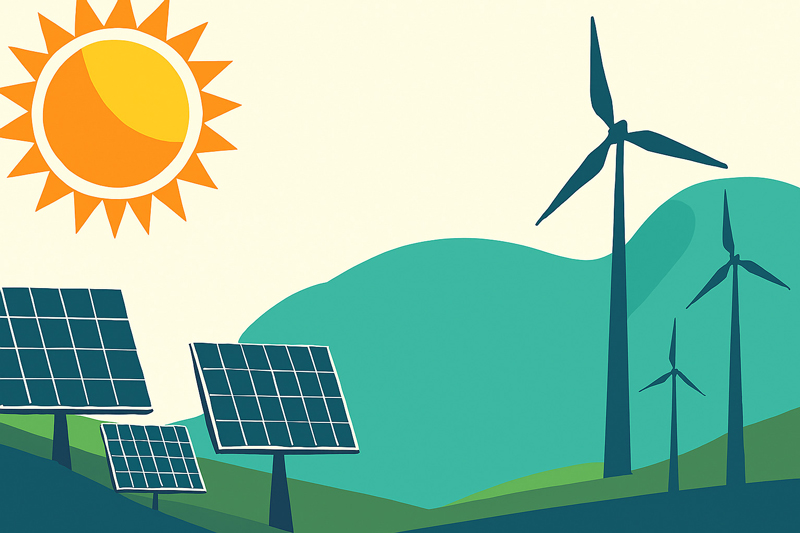India’s renewable energy capacity rose 123 per cent to 20.1 GW by August this fiscal, driven by a strong project pipeline and favourable market conditions. However, bidding activity has slowed sharply, with only 3.4 GW auctioned in the first half of FY2026.
India’s renewable energy (RE) sector has recorded a robust 123 per cent growth in capacity addition, reaching 20.1 gigawatts (GW) in the first five months of FY2026, up from 9.0 GW in the same period last year, according to a recent report by ratings agency ICRA. This surge, driven by a large project pipeline and favourable market conditions, positions the sector to scale beyond 35.0 GW by the end of the fiscal.
The momentum builds on a strong performance in FY2025, when capacity addition rose to 28.7 GW from 18.5 GW in FY2024. The current expansion is supported by a substantial pipeline of 142.8 GW, as per the Central Electricity Authority (CEA), alongside attractive solar module prices and rising electricity demand.
Despite this, the report flags a slowdown in bidding activity. Only 3.4 GW was auctioned in the first half of FY2026, largely due to delays in the signing of power sale agreements (PSAs) between bidding agencies and state distribution utilities. These delays, in turn, stall the finalisation of power purchase agreements (PPAs) with winning developers. ICRA identifies the timely execution of these agreements, along with the augmentation of transmission infrastructure, as critical to sustaining growth.
The agency maintains a ‘Stable’ outlook for the sector, citing strong policy support, superior tariff competitiveness, and increasing sustainability commitments from large commercial and industrial (C&I) consumers.
Key Sectoral Drivers
Recent policy changes are expected to further support cost efficiency. The rationalisation of Goods and Services Tax (GST) rates—from 12 to 5 per cent—for solar photovoltaic (PV) modules and wind turbine generators is projected to reduce capital costs by around 5 per cent. This could lower the cost of generation by 10 paise per unit for solar and by 15-17 paise per unit for wind power.
The demand outlook in the C&I segment, which accounts for 45–50 per cent of India’s electricity consumption, remains highly favourable. Achieving 20 per cent RE penetration in this segment over the next five years would require approximately 100 GW of capacity, implying a compound annual growth rate of nearly 30 per cent.
Battery energy storage systems (BESS) have also seen a decline in quoted bid tariffs, improving the cost economics for hybrid projects. ICRA estimates that India will require 50 GW of energy storage capacity by 2030, to be met through a mix of BESS and pumped storage hydro projects.
Imported N-type solar modules—known for their higher efficiency and longer lifespan due to their use of phosphorus-doped silicon—remained competitively priced at 8-9 cents per watt in August 2025. However, Indian market prices were higher at 15-17 cents per watt due to the imposition of the Approved List of Modules and Manufacturers (ALMM). With ALMM set to extend to solar cells from June 2026, module prices are expected to rise in FY2027, a factor developers must consider in future bids.
The report also notes that the recent imposition of 50 per cent tariffs by the US on Indian exports is likely to impact the competitiveness and volumes of domestic original equipment manufacturers.
Despite these challenges, the credit profile of the RE sector remains resilient. In the first five months of FY2026, the sector recorded 15 upgrades against 13 downgrades, with the former driven by successful project commissioning, satisfactory generation performance, and favourable changes in ownership.


